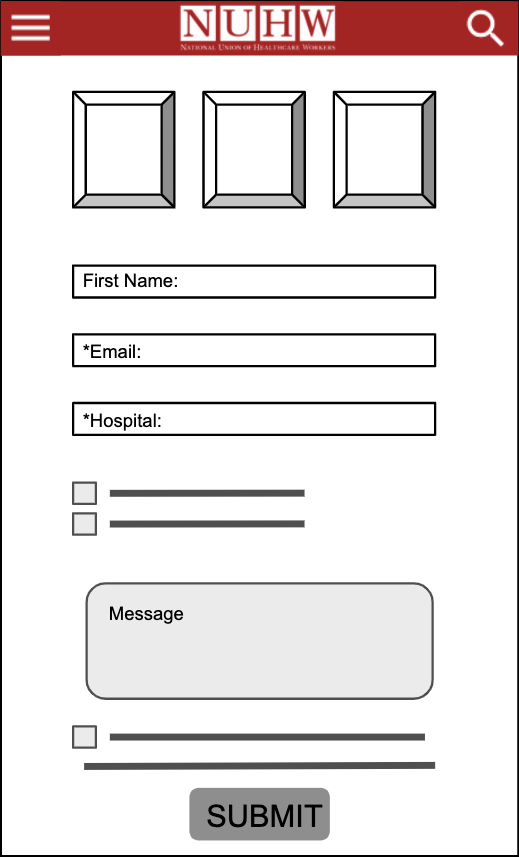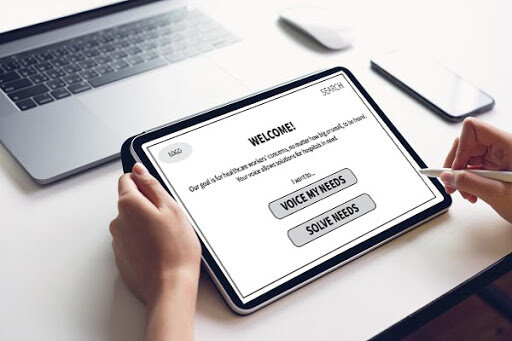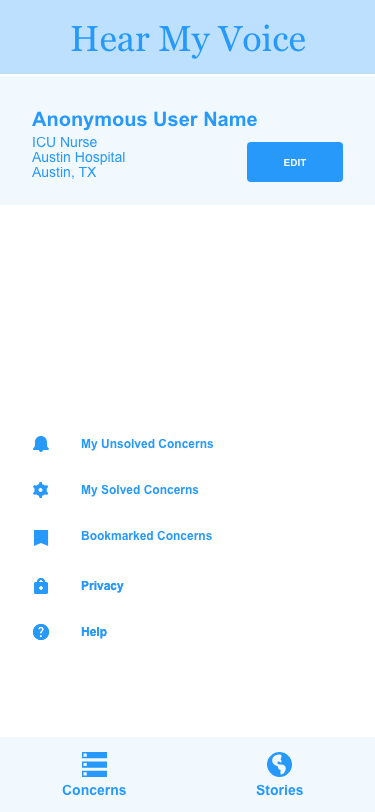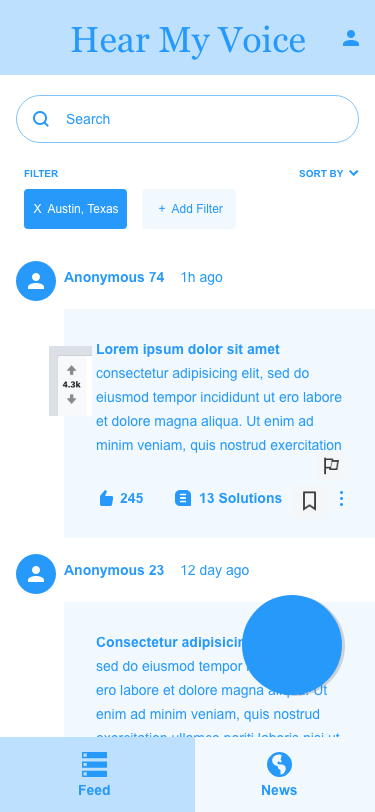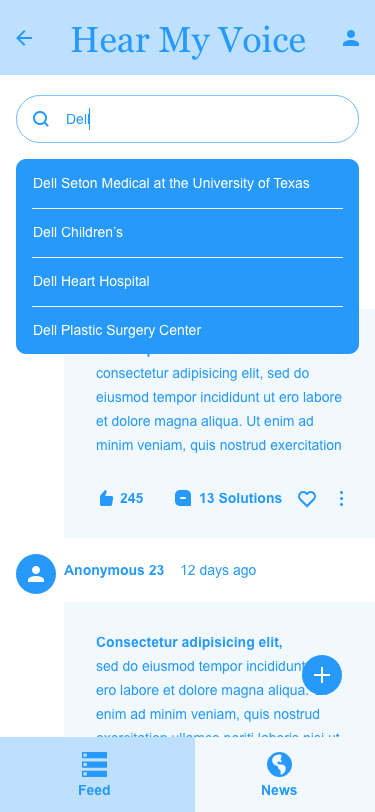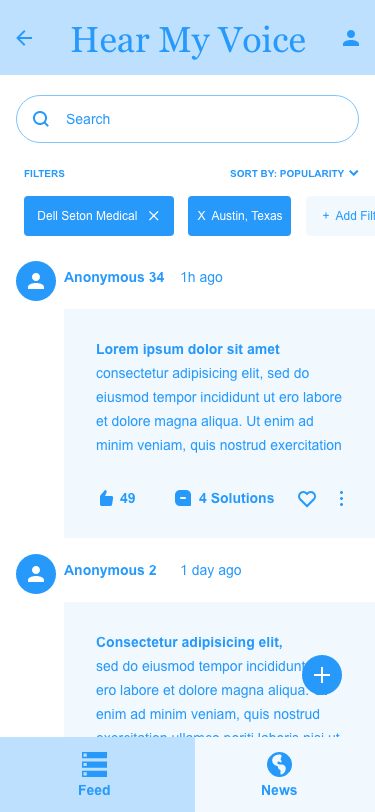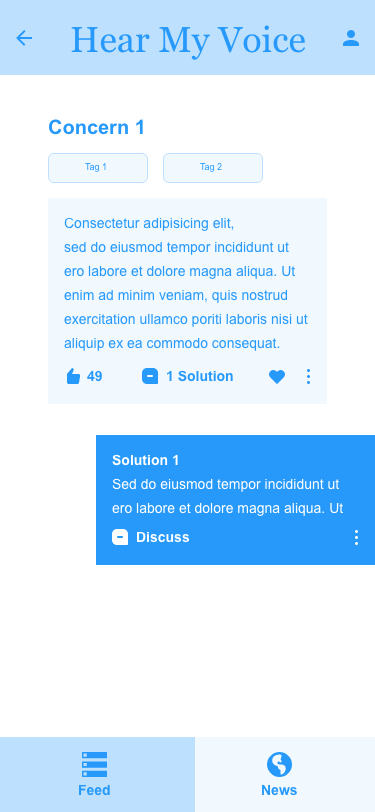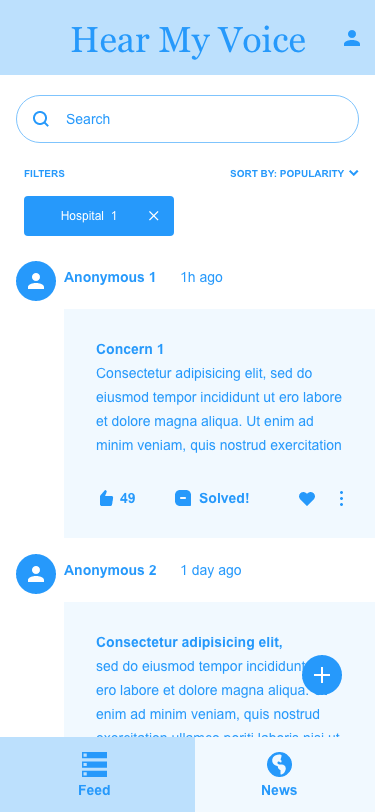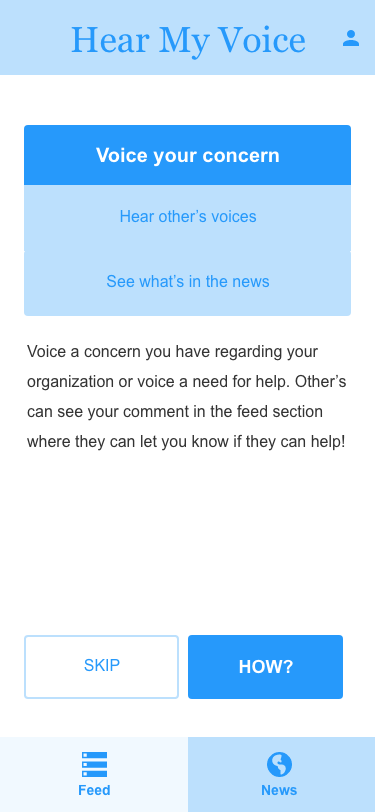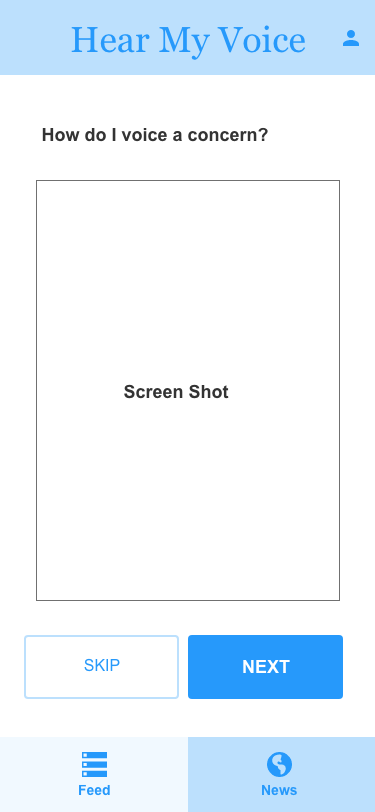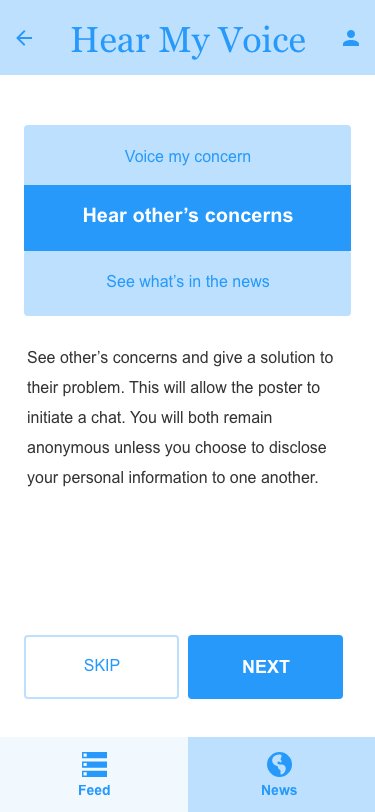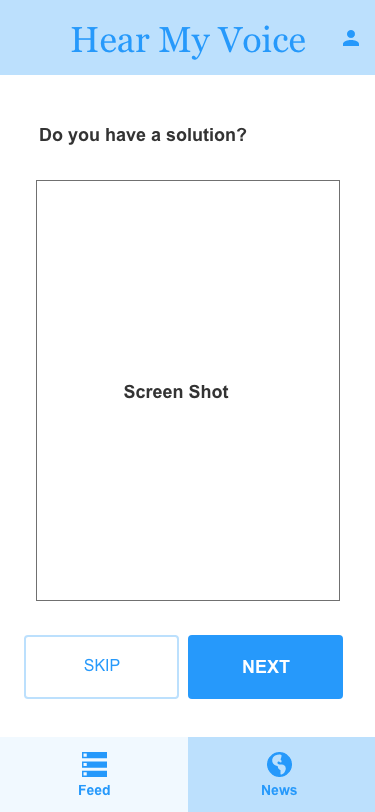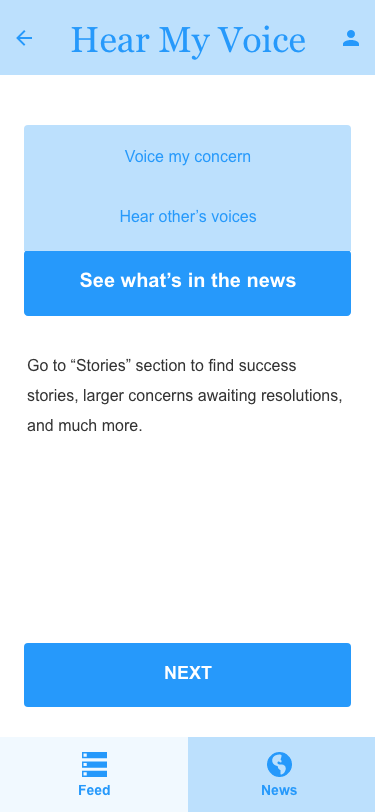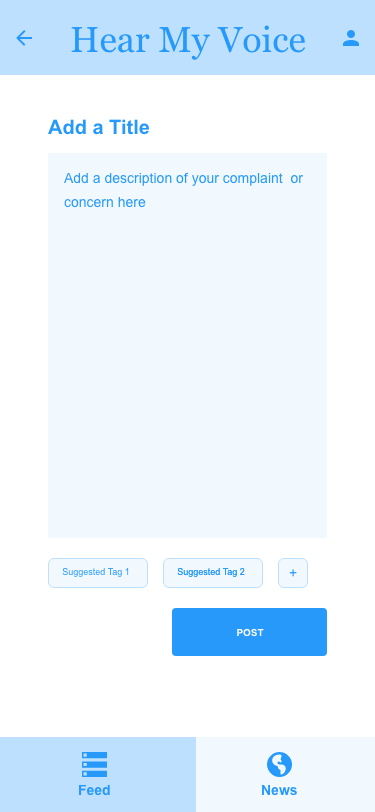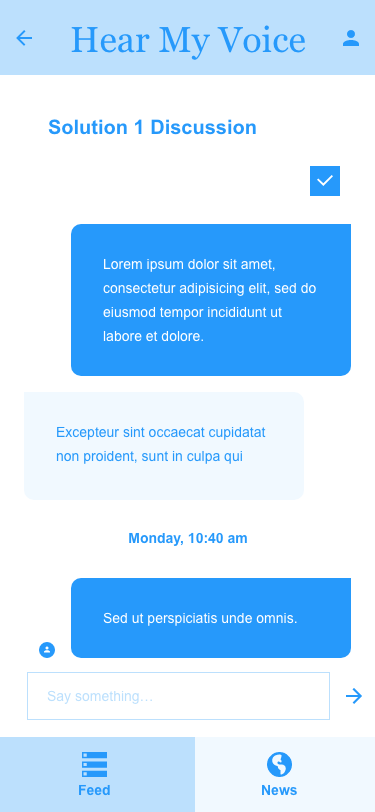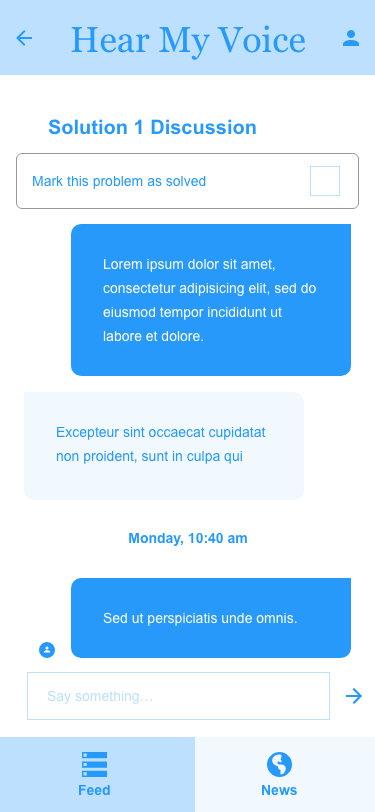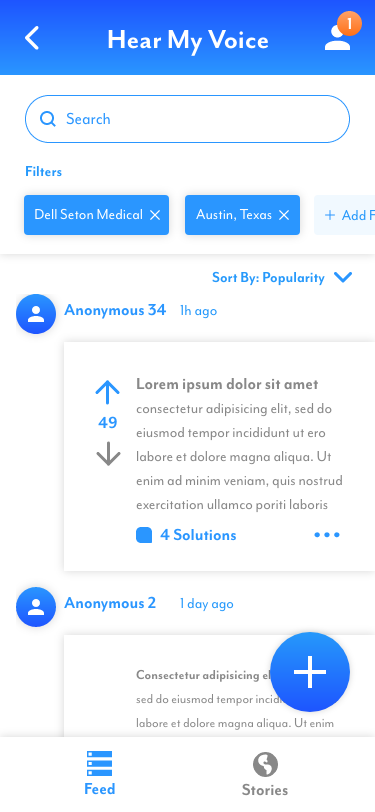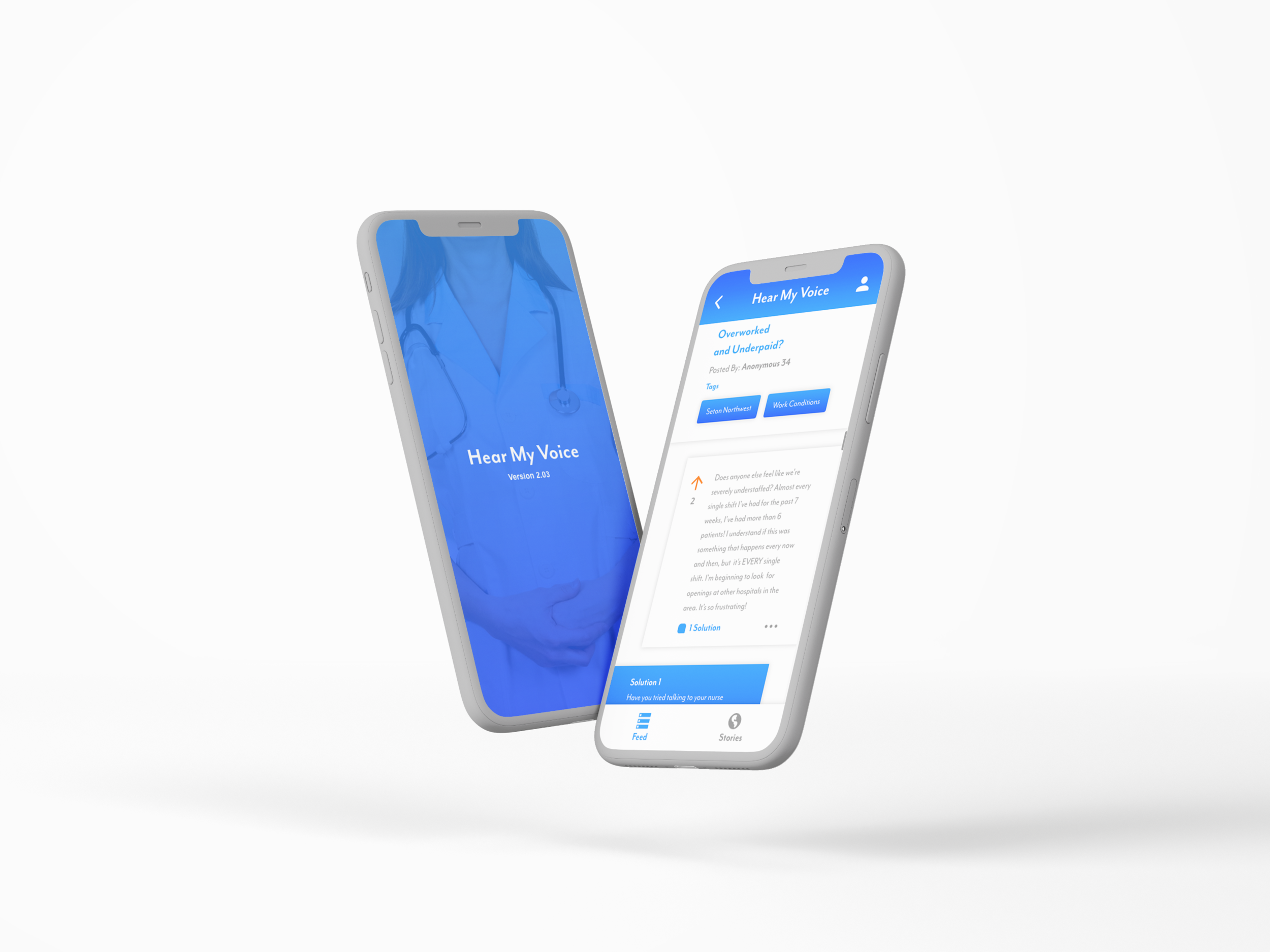Hear My Voice
Abstract
During the spring semester of 2020 at Austin Community College, Jazmine Tyrone, Stacy Holloway and I, were tasked with coming up with a way of giving a voice to a historically underrepresented group. The timing of this project also coincided with the beginning of the COVID-19 pandemic. We were inundated with news reports of the horrors of what the healthcare system was going through. Healthcare workers, defying company orders to stay quiet, posted “secret” videos in order to broadcast their truths to the world: People were dying by the thousands and personal protection equipment was scarce.
As a group of curious designers, with no real-world constraints, we decided that we would love to help them in any way we could and wondered how we could. So we came up with our initial problem statement: Healthcare workers are concerned because they do not have help or equipment needed to perform sufficiently during the pandemic.
Problem Statement: Healthcare workers are concerned because they do not have the help or equipment needed to perform sufficiently during the pandemic.
Research
We wanted to validate that our hypothesis was an actual concern, so we began our research. We created a comprehensive list of questions. We called every healthcare worker we knew, from EMTs to doctors, we interviewed a very broad range of people asking them questions about the pandemic and what their PPE supply levels were. We conducted dozens of calls and interviews. We recorded hours of conversations. It was at this point we noticed that an overwhelming majority of our interviews were with nurses so we decided to narrow our target users to them.
Sample of first round interview questions:
How long have you worked in the healthcare field?
Are you directly involved/exposed to patients with COVID-19?
How confident are you in your employers ability to supply PPE?
How do you voice your concerns within your workplace?
Full list of questions can be found here.
But something was off with our data…
It didn’t validate our problem statement at all. The healthcare workers we interviewed all seemed to be unaffected by the pandemic. Just like us, they were hearing about the tragedies in major cities, but many of them were on stand-by, hanging out at work with nothing to do.
“It’s really hard right now… half of the country is suffering, aka New York, but that’s all we’re shown by the media, and I’m just sitting there, barely doing anything.”
Pivot
Fake news? Probably not. None of our interviewees were from the cities being reported on in the news. We began to fall behind in class, all our peers had started ideating and we were still trying to figure out what our problem was. As we got further behind, we became more and more frustrated at the lack of validation – we were almost ready to give up and start from scratch. While parsing through our data one last time, we found a commonality in a majority of our interviews. These healthcare workers, specifically those working in hospitals, were often neglected by their management and the hospital administration. They were left in the dark, their complaints were never heard, and often they were too afraid to voice them in the first place.
We wanted to help so badly with the pressing issue of the pandemic, but soon realized that our problem was actually much bigger than that. This was a systemic issue in healthcare systems. We revised our problem statement: Hospital workers are frustrated – they often feel like they are not heard, because the groups that make decisions are disconnected from those working on the ground level.
Revised Problem Statement:Nurses are frustrated – they often feel like they are not heard, because the groups that make decisions are disconnected from those working on the ground level.
We reworked our interview questions and went back to researching. We made countless calls, initially thinking we were going to annoy the hell out of the people we were talking to. Quite the contrary, we found that these nurses had so much stored away that it was helpful for them to unload. We were listening to them.
We synthesized our data in several ways, starting with an empathy map to help organize what we had collected. This empathy map allowed us to find more commonalities in our data, specifically what nurses needed:
Needs Statement: Hospital workers need to feel that their concerns are heard and addressed.
With the data from our recordings we also created a user persona, Imani Gandy, and put her through an as-is journey to help us empathize with her struggles, and identify pain points. Our user person helped us, as designers, empathize, with the nurses and their struggles of feeling unheard and neglected.
Design
Ideation
Jazmine, Stacy, and I, each sketched out three unique ideas. Jazmine’s involved a national nurses’ union, Stacy’s idea crowdsourced help from the public to support nurses, and mine was a public message board that provided transparency and insight into the welfare of nurses in a given hospital.
Key Insights
We took our designs and tested them on the nurses we interviewed previously. Below are some key insights from our initial tests of our solutions:
Unions don’t exist in many states.
The public is limited in how they can help nurses with problems that are workplace specific, i.e. understaffing, issues with coworkers, etc.).
Hospital systems would definitely not be ok with a public board airing gripes.
Each of these ideas were very strong on their own, but we needed to decide on one. So we decided to merge them into a singular design. We took the strength of numbers (unions), the public’s willingness to help nurses (crowdsourcing) and the need for transparency and combined them into one design: Hear My Voice.
Wire-framing
We started wire-framing the concept, and conducted usability testing as much as possible.
Feedback from first round of testing
“I don’t know the difference between the ‘New +’ and the ‘+’.”
“I’m not sure I understand what the difference is between ‘Feed’ and ‘News’.”
“I think it’s a great idea, if you can make sure hospital administration actually follows through.”
Final Version and the Golden Path
With each iteration we tested several times, with our nurses, before polishing up the visual design. Our final version allows Imani to post her concerns and complaints to her own hospital’s “thread”. She can post with her complete contact information, or anonymously if she so chooses, although Hear My Voice requires an email associated with a hospital domain. These posts are then visible to nurses, union administrators, and hospital management across the nation, each of whom can comment, like, or post a solution. Each post, whether it is the initial concern, or a solution, can be voted on, in a manner similar to Reddit. Ultimately, the solution chosen is up to Imani, and her concern is left open until it is resolved.
Click on the image below or here to access a live prototype of Hear My Voice. The prototype will guide you through clickable options. Note: The prototype is not fully functional and is intended to be accompanied by live commentary. Contact me at ali@alikhandesign.com if you’d like a walkthrough!
Please contact ali@alikhandesign.com for a guided walkthrough.
Final Thoughts
How Hear My Voice is Designed to Help NURSES
We believe that Hear My Voice will help nurses and healthcare workers by:
Helping them feel heard in a safe space, without fear of negative ramifications.
Offering a safe space to hear and help their peers.
Holding administrators accountable for changes that are within their control.
Creating visibility and transparency into what is happening within the hospital working environment.
Overall the project went from being a nightmare, when we were unsure of what the actual problem was, to being a success. A few of the nurses we tested, even wondered if the app would ever be “live.”
This project taught us that your problem is only as real as your data, and that you can sometimes be biased by what you want to solve for, rather than what the actual problem is. By trying to force the data, to validate our desired problem, we only caused ourselves hours of frustration. By listening to the data we were able to come up with a product that not only would our users benefit from, they were be excited about.
If you have any questions about this project or any others that interest you, feel free to email me at ali@alikhandesign.com.
Next Steps
Given more time and resources Hear My Voice would benefit from:
- More research. It's important to note that we were not able to interview any hospital administrators or management personel at hospitals. Their input would be invaluable to whether implementing if Hear My Voice would be a viable solution.
- Developing a completely workable protoype for further testing. We designed for a "golden path", which is assuming everything goes as planned, which we all know isn't the usual case.
- Update Summer 2020: It's entirely possible that the Covid-19 virus had not made it's way through entirity of the United States in the Spring of 2020. Interviewing these healthcare professionals now, when cases are spiking across the country, might provide a different story.





